Article I. “Self-Determination of the Ukrainian people,” proclaims the Ukrainian SSR as a sovereign nation-state operating within its existing borders. The people of Ukraine are granted the inalienable right to self-determination, and the republic undertakes to defend its statehood, including the legal prosecution of violent acts directed against it.
Article II. “Rule of the people” establishes that all citizens of the Ukrainian SSR, regardless of nationality. This power is exercised through the Constitution, elected deputies of the Verkhovna Rada, and local councils. Only the Verkhovna Rada has the right to represent the interests of the entire people, excluding this role for parties, organizations, or individuals.
Article III. “State Power” affirms the independence of the Ukrainian SSR in the decision of all state issues. The supremacy of the Constitution and laws of the Republic is enshrined on its territory. State power is also divided into legislative, executive and judicial branches, and the Prosecutor General, appointed by the Verkhovna Rada, is accountable only to it and is responsible for the observance of the rule of law.
Article IV. “Citizenship of the Ukrainian SSR,” introduces the republic’s own citizenship, which becomes a huge breakthrough on the way to building statehood and defining the individual in the legal field. The law regulates the acquisition and loss of citizenship, guaranteeing equal rights and freedoms for all, regardless of origin, nationality, social status or beliefs. The Republic undertakes to protect its citizens both within and outside the country and also regulates migration processes.
Article V. “Territorial Supremacy” enshrines the control of the Ukrainian SSR over its entire territory, the borders of which are inviolable and may be changed only with the consent of the republic. Article VI. “Economic Independence” emphasizes the right of the people of Ukraine to dispose of national resources, including land, subsoil, water, and airspace. These resources serve as the material basis of the Republic’s sovereignty. Ukraine independently forms its economic, financial, and banking systems, develops its budget, and, if necessary, may introduce its own currency.
Article VII. “Environmental Security” enshrines the right of the republic to independently determine measures to protect nature and prevent environmental threats.
Article VIII. “Cultural Development” emphasizes the independence of the Republic in matters of science, education, and culture. The document guarantees all nationalities the right to free cultural development and restoration of historical heritage.
Article IX. “External and Internal Security” confirms the right of the Republic to have its own armed forces, internal troops, and security bodies, subordinating them to the Verkhovna Rada. It also proclaims the republic’s aspiration to become a neutral state, not participating in military blocs, with the observance of the policy of non-nuclearisation.
Article X. “International Relations” establishes the Ukrainian SSR as an independent subject of international law, which has the right to conclude treaties, exchange diplomatic representatives, and participate in international organizations. Relations with other republics are based on the principles of equality, mutual respect, and non-interference. The Declaration served as the basis for the preparation of the new Constitution of Ukraine and the conclusion of international agreements, reflecting the transition from a republic within the USSR to a sovereign state. Additionally, based on the Declaration and its principles, Ukraine planned to sign a new union treaty, as stated at the very end of the document.

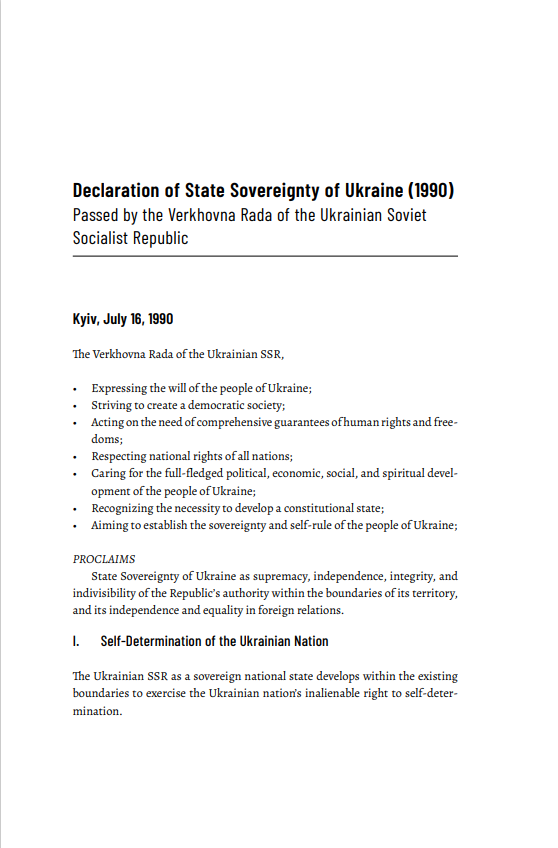
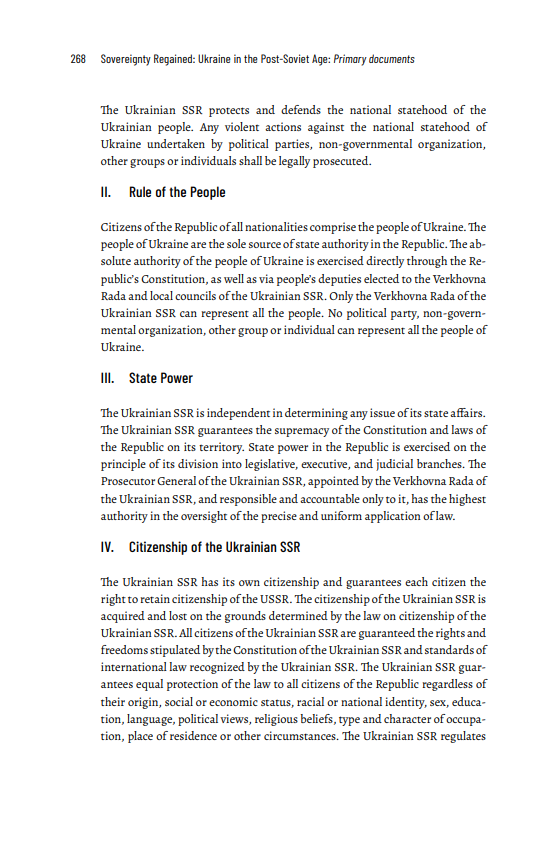
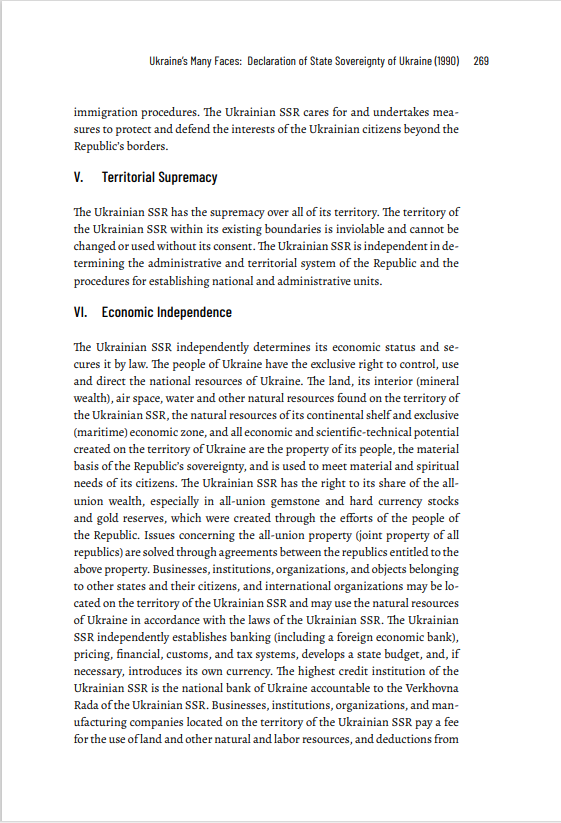
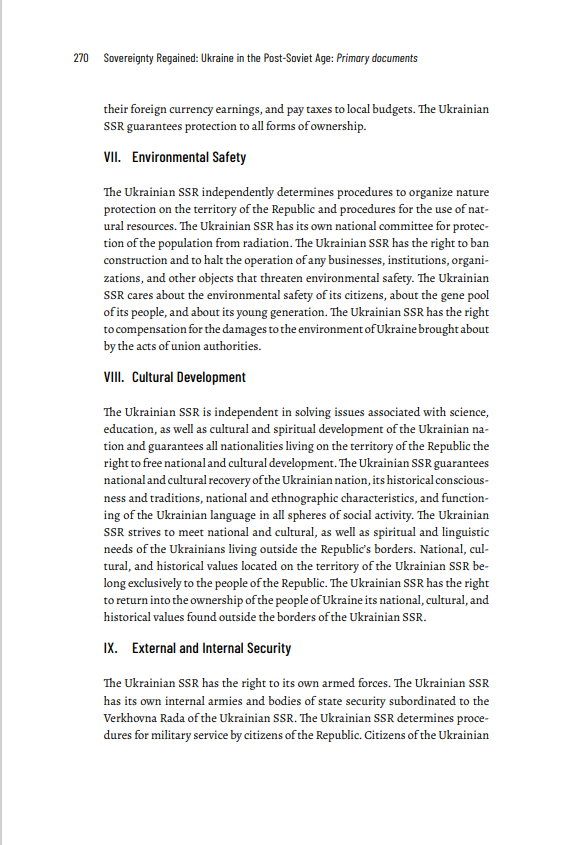
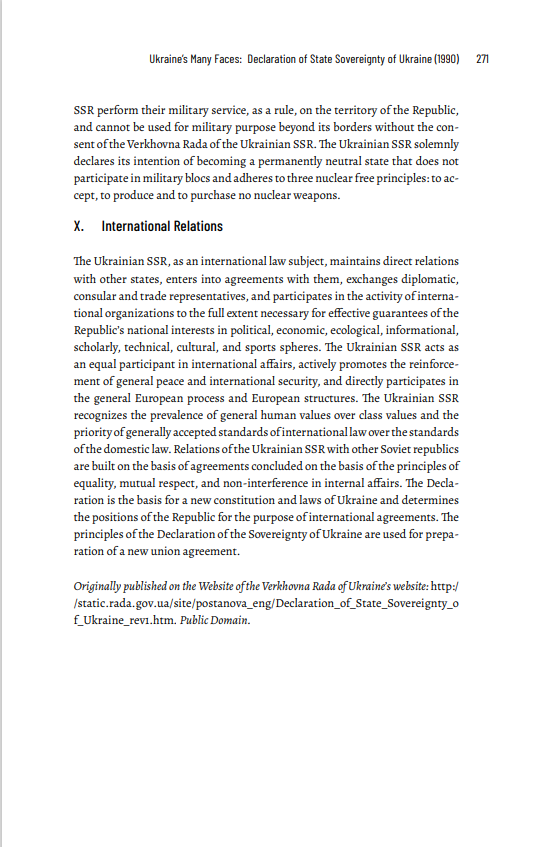

The Declaration of State Sovereignty of Ukraine, adopted by the Verkhovna Rada of the Ukrainian SSR on 16 July 1990, was the key document that marked the beginning of Ukraine’s path to independence. Its adoption took place in the context of the first pluralistic elections to the Verkhovna Rada of the Ukrainian SSR in March 1990 and the so-called “Parade of Sovereignties” during the late 1980s, a process in which the republics of the USSR proclaimed their autonomy against the backdrop of a weakened union center and Soviet censorship. The document, consisting of a preamble and ten articles, laid down the basic principles of the republic’s autonomy policy, reflecting the desire to dismantle the Soviet ideological system, democratize society, respect human rights, uphold the national rights of all peoples, and ensure social, economic, and spiritual development. Remaining within the legal framework of the USSR, the declaration emphasized the gradual transition to independence, focusing on the self-determination of the Ukrainian people while avoiding references to ethnicity or any other discrimination, a principle that is repeatedly underscored in the text of the declaration.